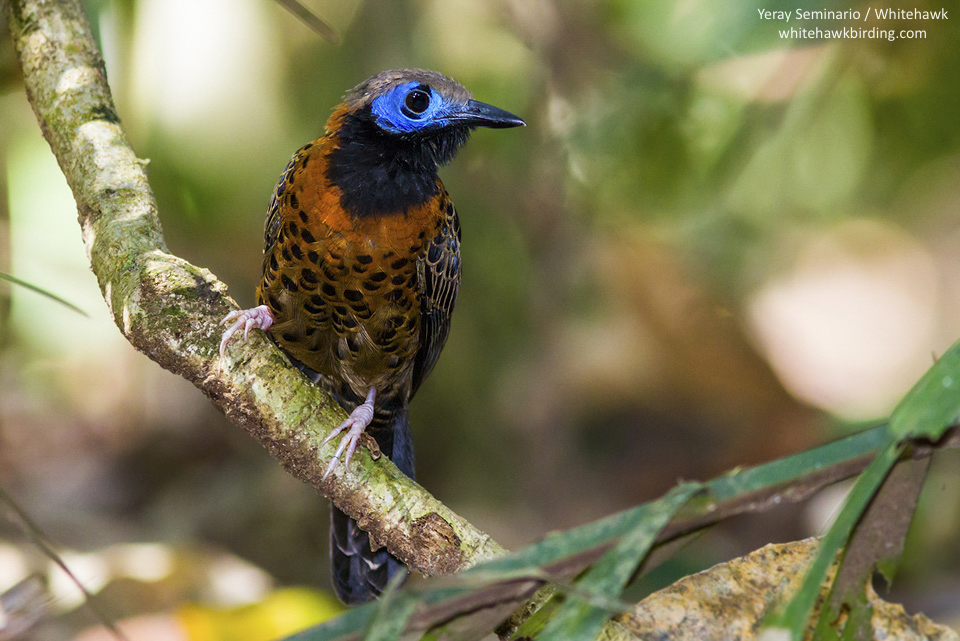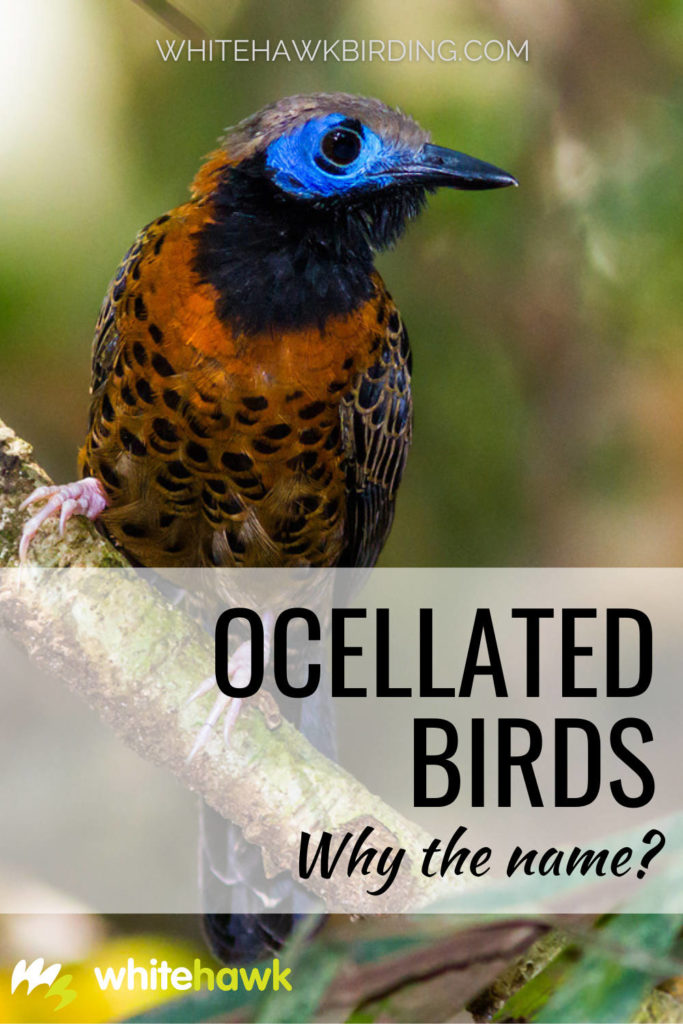While guiding in the humid forest of Colombia, I spotted an Ocellated Tapaculo, a beautiful but elusive bird. Upon hearing this species’ name, one of the birders asked “Where do these names come from? What does that name mean?” At the time, I had no answer to give him. But I wanted to be able to answer this question for the next person who asked. So I did some research.

It turns out that the name comes from ocellus, a modern Latin word derivate and diminutive of oculus (‘eye’). So, ocellus literally means ‘small eye’. In this case, the name refers to the eye-like spots on the bird’s plumage. Therefore, the white ocelli (the plural of ocellus) that cover the body of the Tapaculo were the inspiration for its name.
We can find this bird from Peru to Colombia, within the Andean montane forest. If you are interested in seeing it, there will be good opportunities on our tour, Colombia: Three Andean Mountain Ranges.
The adjective is not exclusive of the Ocellated Tapaculo
Many other species, curiously all in the Neotropics, also have this adjective in their names. Among the most interesting is the Yucatan Peninsula endemic, the amazing Ocellated Turkey. This bird – with a mixture of green and bronze colors and a bare, blue head, received its name from the astonishing blue and rufous ocelli on its tail.

During our tour, Honduras and Guatemala: Jewels of Central America, we will visit El Tikal National Park in the Peten region of Guatemala. This will be a great chance to spot this jewel. But, if you would prefer a shorter tour, our Belize: Birds of the Caribbean tour offers another good opportunity to see this species.
Finally, I should highlight one more spotted bird, which is widely distributed in Central America – the Ocellated Antbird. The black ocelli on its belly and back stand out against its otherwise brown plumage, making it look as if they were painted on. That’s why this species is. one of the targets on Pipeline Road in Panama; and in La Selva Biological Station, which we visit on our new birding tour: Costa Rica: Wild Nature

Other Ocellated birds in the Neotropics
- In the Oak-pine forest from southern Mexico to Nicaragua – Ocellated Quail.
- A dark nightjar that we can find in many places in South America , and in Central America (Honduras to Costa Rica), we can also find a regional subspecies – Ocellated Poorwill.
- Found in Costa Rica and several countries in South America – Ocellated Crake.
- The Mexican endemic – Ocellated Thrasher.
- One of the smallest woodpeckers found in Peru and Bolivia – Ocellated Piculet.
- Found in the Northwest of the Amazonia – Ocellated Woodcreeper.
Common names aren’t the only ones use the word “ocellus”. Some scientific names also incorporate this word, such as ocellate, ocellatus, and ocellatum. For example, Podargus ocellatus and Leipoa ocellate are the scientific names of Marbled Frogmouth and Malleefowl, respectively. The two species are in Australia – another upcoming destination for Whitehawk.


